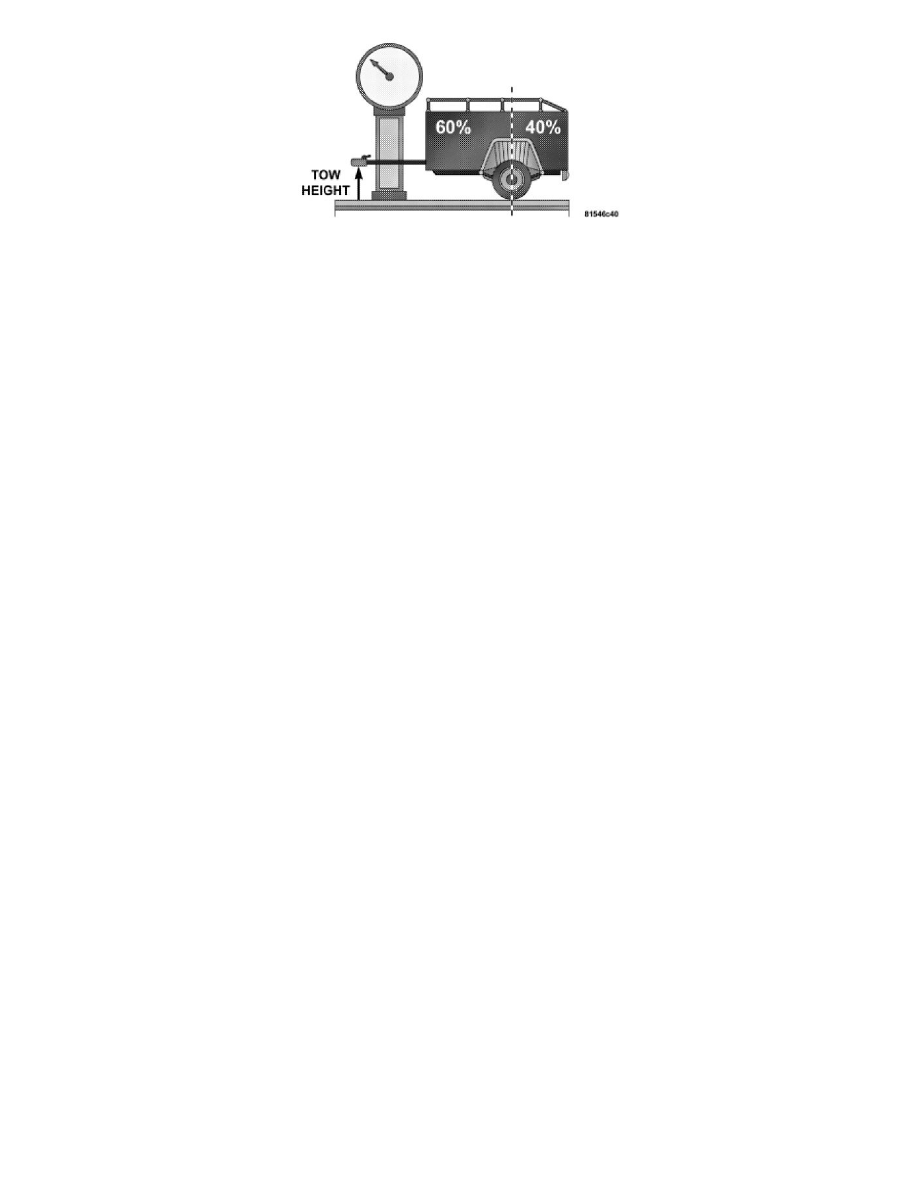Wrangler 2WD V6-3.8L (2008)

Consider the following items when computing the weight on the rear axle of the vehicle:
-
The trailer tongue weight.
-
The weight of any other type of cargo or equipment put in or on your vehicle.
-
The weight of the driver and all passengers.
NOTE: Remember that everything put into or on the trailer adds to the load on your vehicle. Also, additional factory-installed options, or
authorized dealer-installed options, must be considered as part of the total load on your vehicle. Refer to the Tire and Loading Information
placard in the "Tire- Safety Information" section of this manual for the maximum combined weight of occupants and cargo for your vehicle.
Towing Requirements
To promote proper break-in of your new vehicle drivetrain components, the following guidelines are recommended:
NOTE: Trailer towing requires special rear axle lubricant. Refer to "Fluids, Lubricants, and Genuine Parts" in Section 7 for more
information.
CAUTION: Avoid towing a trailer for the first 500 miles (805 km) of vehicle operation. Doing so may damage your vehicle.
Perform the maintenance listed in the "Maintenance Schedule." When towing a trailer, never exceed the GAWR, or GCWR, ratings.
WARNING:
Improper towing can lead to an injury accident. Follow these guidelines to make your trailer towing as safe as possible:
Make certain that the load is secured in the trailer and will not shift during travel. When trailering cargo that is not fully secured, dynamic
load shifts can occur that may be difficult for the driver to control. You could lose control of your vehicle and have an accident.
-
When hauling cargo or towing a trailer, do not overload your vehicle or trailer. Overloading can cause a loss of control, poor performance or
damage to brakes, axle, engine, transmission, steering, suspension, chassis structure or tires.
-
Safety chains must always be used between your vehicle and trailer. Always connect the chains to the frame or hook retainers of the vehicle hitch.
Cross the chains under the trailer tongue and allow enough slack for turning corners.
-
Vehicles with trailers should not be parked on a grade. When parking, apply the parking brake on the tow vehicle. Put the tow vehicle automatic
transmission in PARK (P). With a manual transmission, shift the transmission into 1st gear. And with four-wheel-drive vehicles, make sure the
transfer case is not in N (Neutral). Always, block or "chock" the trailer wheels.
-
GCWR must not be exceeded.
-
Total weight must be distributed between the tow vehicle and the trailer such that the following four ratings are not exceeded:
-
GVWR
-
GTW
-
GAWR
-
Tongue weight rating for the trailer hitch utilized (This requirement may limit the ability to always achieve the 10% to 15% range of tongue weight
as a percentage of total trailer weight).
Towing Requirements - Tires
-
Do not attempt to tow a trailer while using a compact spare tire.
-
Proper tire inflation pressures are essential to the safe and satisfactory operation of your vehicle. Refer to the "Tires-General Information" section
of this manual for proper tire inflation procedures.
-
Also, check the trailer tires for proper tire inflation pressures before trailer usage.
-
Check for signs of tire wear or visible tire damage before towing a trailer. Refer to the See: Wheels and Tires/Tires/Description and Operation
section of this manual on Tread Wear Indicators for the proper inspection procedure.
-
When replacing tires refer to See: Wheels and Tires/Tires/Description and Operation section of this manual on Replacement Tires for proper tire
replacement procedures. Replacing tires with a higher load carrying capacity will not increase the vehicle's GVWR and GAWR limits.
